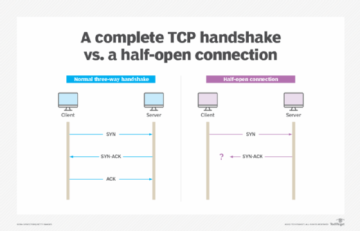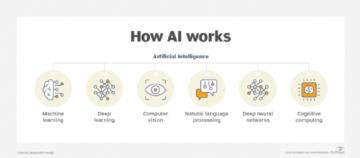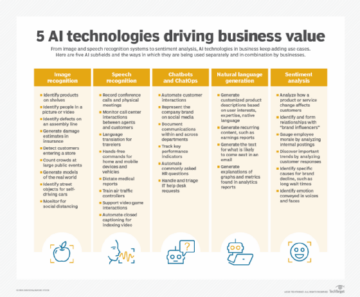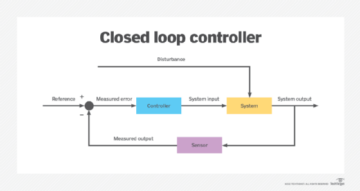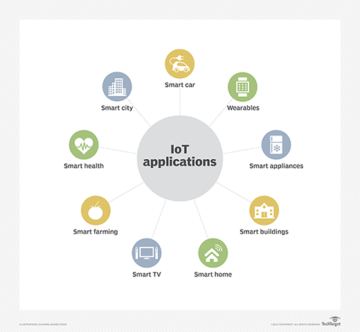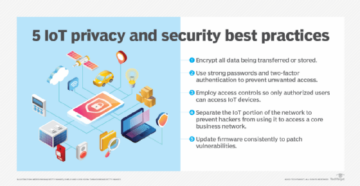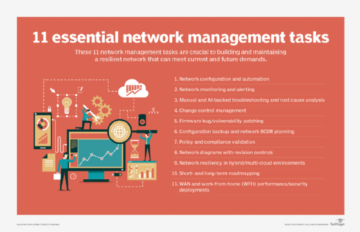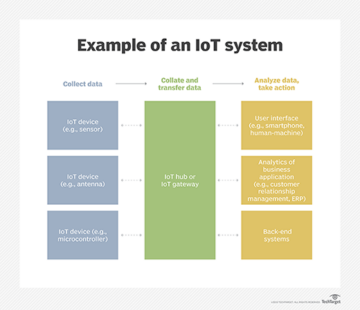
From MRI machines to wearable pumps, the internet of medical things devices have small storage capacities, high uptime demands and even challenges of magnetic interference with internet connectivity. They also save lives, so failure is not an option.
The internet of medical things (IoMT), often called healthcare IoT, includes medical devices and applications that connect to the internet through healthcare IT systems. Primary uses of IoMT include the following:
- Monitoring wearable devices that send status updates to medical professionals.
- Tracking the location of patients and machines in a hospital.
- Keeping tabs on medication orders.
- Remotely checking on patients with long-term health conditions.
IoT — in hospital, retail and other settings — has grown thanks in part to falling prices of communications chips and near-ubiquitous wireless networking. Without access to cheap chips, storage and networking, the IoT revolution would not have happened at all.
IoMT devices fall into many categories. Large, installed equipment such as MRI machines are IoMT devices. So too are smaller units, including infusion pumps, glucose meters, smart thermometers and heartrate monitors. Personal emergency response systems (PERS) and remote patient monitoring (RPM) machines make up a substantial part of the IoMT product list. Tiny ingestible sensors and cameras that perform medical tasks, such as endoscopies, are a growing segment of IoMT.
Healthcare providers’ IT departments should understand the operating environment challenges unique to each IoMT device type so they can set up reliable systems that are secure and protected.
Installed healthcare systems
Healthcare IoT faces distinct challenges at the intersection of medicine and computing. For example, MRI machines rely on giant magnets that can damage computers in the same room. Similarly, magnets interfere with radio signals, so Wi-Fi hotspots and Bluetooth beacons cannot share space with MRI machines. MRI machines can only be networked using wired interfaces, such as RS-232 serial ports or USB connections.
Other considerations revolve around building infrastructure for these medical devices. MRI machines need an uninterruptible power supply unit capable of 100 kW of power. MRIs and other imaging machines require this kind of special equipment to ensure smooth and safe operation.
Mains-powered hospital machinery, such as glucose meters and infusion pumps, can connect to the internet via Wi-Fi.
Some pumps and meters use battery power as a safeguard against power interruptions. Such machines generally have a battery life of between three and 12 hours in operation.
Wearable and nanotech IoMT devices
Hospital smart thermometers, pumps and other devices can incorporate flash SD cards to store patient data derived from their activity. Healthcare IoT also can enable these devices to share information with other equipment. For example, pumps can transmit usage data to a controller unit via Wi-Fi.
PERS and RPM devices generally operate on a 4G or 5G cellular network, or use a Bluetooth short-range wireless connection. These wearable battery-powered systems usually have little RAM or storage onboard. Some wearable IoMT devices must also be waterproof.
Medical connectivity also extends to relatively new devices, such as tiny sensors and cameras, designed to be swallowed. Such devices can reside long-term in the gastrointestinal tract, or enter and exit the patient’s body during single-day endoscopy procedures.
A smooth capsule typically encases a tiny camera and radio transmitter, giving this technology the moniker pill cam. Once swallowed, a pill cam shows medical staff the small intestine, for example, to detect issues. The camera transmits images to a data recorder that the patient wears during the procedure.
IoMT implementation
IoMT includes all hospital equipment that can be networked to send data to a hospital’s internal IT systems. In practice, a healthcare provider must factor in multiple considerations when it builds and implements an IoMT system for a specific hospital or similar facility.
Privacy. Confidentiality and privacy are top concerns when treating patients. No unauthorized or malicious device should have access to data collected by IoMT units. The state of an individual’s health could be revealed by any of these devices, such as the wireless machine by their bed monitoring their vitals.
Security. In IoMT use cases, security often means protecting devices without much memory onboard. To implement security protocols, healthcare providers might need to lay out IoMT devices in layers with firewall protections between the devices. An IT team tasked with deploying an IoMT system must know each device’s role within the medical workflow, and how a security breach could affect patients treated with those machines.
Security and privacy, as well as continuous power through grid or battery supply, are crucial in a medical world that is ever more reliant on connected machines to carry out treatments. Unlike an IoT-connected gadget, an IoMT device could have a profound effect on whether you live or die.
Dan Jones is a tech journalist with 20 years of experience. His specialties include 5G, IoT, 4G small cells and enterprise Wi-Fi. He previously worked for Light Reading and ComputerWire.
- SEO Powered Content & PR Distribution. Get Amplified Today.
- PlatoData.Network Vertical Generative Ai. Empower Yourself. Access Here.
- PlatoAiStream. Web3 Intelligence. Knowledge Amplified. Access Here.
- PlatoESG. Carbon, CleanTech, Energy, Environment, Solar, Waste Management. Access Here.
- PlatoHealth. Biotech and Clinical Trials Intelligence. Access Here.
- Source: https://www.techtarget.com/iotagenda/tip/IoMT-device-tips-for-healthcare-IT-departments
- :has
- :is
- :not
- $UP
- 1
- 100
- 12
- 20
- 20 years
- 50
- 5G
- a
- access
- Access to data
- activity
- affect
- against
- All
- also
- an
- and
- any
- applications
- ARE
- around
- AS
- At
- battery
- Battery life
- BE
- between
- bluetooth
- body
- breach
- Building
- builds
- by
- called
- camera
- cameras
- CAN
- cannot
- capable
- capacities
- Cards
- carry
- cases
- categories
- Cells
- cellular
- challenges
- cheap
- checking
- Chips
- collected
- Communications
- computers
- computing
- Concerns
- conditions
- Connect
- connected
- connection
- Connections
- Connectivity
- considerations
- continuous
- controller
- could
- crucial
- damage
- data
- demands
- departments
- deploying
- Derived
- designed
- detect
- device
- Devices
- Die
- distinct
- during
- each
- effect
- emergency
- enable
- ensure
- Enter
- Enterprise
- Environment
- equipment
- Even
- EVER
- example
- Exit
- experience
- extends
- faces
- Facility
- factor
- Failure
- Fall
- Falling
- firewall
- Flash
- following
- For
- from
- generally
- giant
- Giving
- Grid
- Growing
- grown
- happened
- Have
- he
- Health
- healthcare
- High
- his
- Hospital
- HOURS
- How
- HTTPS
- ICON
- images
- Imaging
- implementation
- implements
- in
- include
- includes
- Including
- incorporate
- individual
- information
- Infrastructure
- infusion
- installed
- interfaces
- interfere
- interference
- internal
- Internet
- intersection
- into
- iot
- issues
- IT
- jones
- journalist
- jpg
- Kind
- Know
- large
- lay
- layers
- Life
- light
- List
- little
- live
- Lives
- location
- long-term
- machine
- machinery
- Machines
- Magnets
- make
- malicious
- many
- means
- medical
- medical devices
- medication
- medicine
- Memory
- might
- monitoring
- monitors
- more
- MRI
- much
- multiple
- must
- Need
- networking
- New
- no
- of
- often
- on
- Onboard
- once
- only
- operate
- operating
- operation
- Option
- or
- orders
- Other
- out
- part
- patient
- patient data
- patient monitoring
- patients
- perform
- personal
- plato
- Plato Data Intelligence
- PlatoData
- ports
- power
- Power Supply
- practice
- previously
- Prices
- primary
- privacy
- procedure
- procedures
- Product
- professionals
- profound
- protected
- protecting
- provider
- providers
- pumps
- Radio
- RAM
- Reading
- relatively
- reliable
- rely
- remote
- require
- response
- retail
- Revealed
- Revolution
- Role
- Room
- s
- safe
- safeguard
- same
- Save
- SD
- Section
- secure
- security
- segment
- send
- sensors
- serial
- set
- settings
- Share
- share information
- should
- Shows
- signals
- similar
- Similarly
- small
- smaller
- smart
- smooth
- So
- some
- Space
- special
- specific
- Staff
- State
- Status
- storage
- store
- substantial
- such
- supply
- system
- Systems
- tasked
- tasks
- team
- tech
- Technology
- thanks
- that
- The
- The State
- their
- These
- they
- things
- this
- those
- three
- Through
- tiny
- tips
- to
- too
- top
- transmit
- treated
- treating
- treatments
- type
- typically
- unauthorized
- understand
- unique
- unit
- units
- unlike
- Updates
- uptime
- Usage
- usb
- use
- uses
- using
- usually
- via
- wearable
- wearable devices
- WELL
- when
- whether
- Wi-fi
- wireless
- with
- within
- without
- worked
- workflow
- world
- would
- years
- you
- zephyrnet

